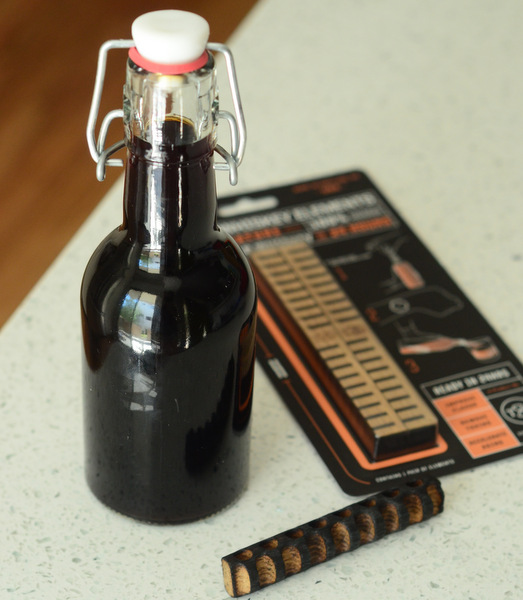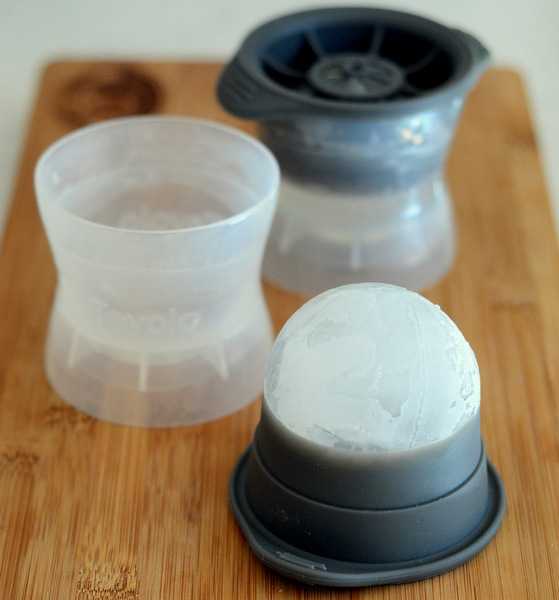
Many spirits are barrel-aged, including rum, whiskey and even gin, to name a few, because spending time in a barrel softens the bite of the alcohol and adds additional flavors to the spirit. Most – but not all – spirits are aged in oak barrels and the wood will add slightly different properties depending on how it was prepared. These days, people have been experimenting with aging all kinds of things, not just straight spirits to add additional layers of flavor to everything from maple syrup to cocktails. You can barrel age things in your own kitchen – without even needing a barrel – thanks to a variety of barrel aging kits that are now available. These kits sometimes include small barrels, but more often include small staves (a.k.a. sticks) of partially charred oak that you can drop into a glass container along with the liquid you want to “age” to start to impart a unique barrel-aged flavor.
I happen to have several such kits at home and put them to use making Barrel Aged Vanilla Extract. I started with about 12 oz of high quality vanilla extract and an attractive glass container. I set aside about a half ounce of the vanilla before I started so that I would have a sample for comparison after the aging process. Small staves are perfect for aging vanilla extract at home because vanilla is expensive and most of use aren’t going to want to buy the half-gallon or so required to fill up a mini barrel – let alone a large barrel!

I added the stave to my vanilla and let it sit for a few days. The aging process will happen much more quickly than it would in a large barrel because of the way that the small staves are shaped to allow the maximum amount of liquid to come into contact with the wood. You’ll start to smell a difference in 2-3 days and the vanilla will have a completely different flavor profile after a week. for 12 oz of liquid, a week is plenty of time. You could let your vanilla age for two weeks, if you want to let it go a bit longer. After that, remove the stave and use it for another bottle. You should be able to get at least two uses out of it.
The un-aged vanilla has a clean vanilla aroma and a short, light finish that tastes mostly of alcohol. The aged vanilla smells even more strongly of vanilla and has a burnt sugar character to it, along with the flavor of vanilla. You’ll definitely detect the oak in the finish because aging makes the finish long and smooth, almost like a whisky. The change is pretty dramatic when you are tasting the vanilla on its own. When baking, the difference between the aged and un-aged vanilla is subtle in some recipes, simply because they don’t require a lot of vanilla. In recipes like vanilla ice cream, pound cakes and custards, you’ll really be able to taste the added complexity in every bite. It will make your desserts more intriguing and even more delicious.
DIY Barrel Aged Vanilla Extract (Without a Barrel)
11-12-oz vanilla extract
1 oak infusion spiral/stave (approx 5-inches)
Combine vanilla and oak spiral in a glass container, preferably with the vanilla completely covering the oak. Let sit for at least 7 days, until the vanilla is completely infused with the flavors of the charred oak. Remove oak and reserve for another use. Use vanilla as you normally would.






What do you think?